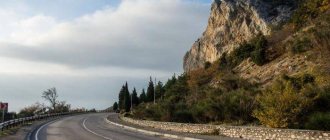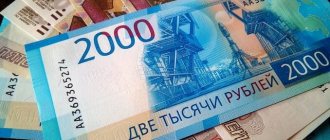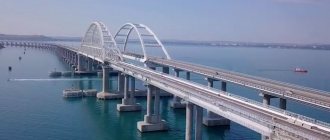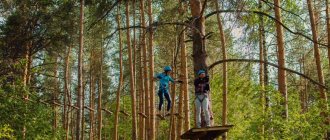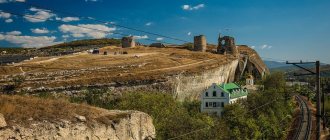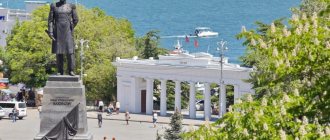| What to see on your own Route Museums Stories, routes and tips from tourists with photos Where to stay in Kolomna Excursions from Kolomna for 1 day |
Kolomna is one of the most ancient cities near Moscow. Founded in 1177, Kolomna has preserved the flavor of Rus' from the time of the Moscow Principality. After all, the city was Yuri Dolgoruky’s favorite place. This makes more modern attractions look contrasting and unusual. Provincial courtyards and an elegantly restored historical center, a centuries-old Kremlin and high-tech buildings are harmoniously combined here. Excursions to Kolomna take place both from Moscow for a few hours (the distance from the capital is 115 km) and from other regions for a day.
What to see in Kolomna in 1 day? In a short visit you will have time to explore the Kolomna Kremlin, ancient churches and several original museums. You can create a route with a gastronomic twist and try the famous Kolomna pastila, or arrange a trip to the holy monasteries in Kolomna and the surrounding area. Itinerary for 1 day in Kolomna on foot through the main attractions with a detailed description - below.
Mikhailovsky Gate Photo: © Svetlana Turner
What to see in 1 day in Kolomna on your own
Kolomna is a major tourist and transport center in the Moscow region. In the 14th–15th centuries, Kolomna was the richest city in the principality after Moscow. With the Romanovs coming to power, Kolomna lost its political influence and became a major merchant center. In subsequent centuries, Kolomna continued to actively develop and be built up; the city was often the site of historical events. Kolomna was visited by Russian emperors, including Peter I and Catherine II. What to visit in Kolomna in 1 day? The historical part of the city is small; most of the attractions are compactly located within its boundaries. Whether you are visiting Kolomna for 1 day by car or planning to travel on foot, you should begin your acquaintance with the ancient city of the Moscow region from the Kremlin.
Photo: © Svetlana Turner
Kolomna Kremlin
The Kremlin is the landmark of Kolomna that you simply need to see in 1 day. The defensive fortress was built in 1525–1531. Today it is one of the best-preserved and large-scale Russian fortresses of that period. The fortress was built several years after the defeat of the city by the Crimean Khan Mehmed I. Prince Vasily III ordered the construction of the Kremlin in stone, since the wooden Kolomna was almost completely destroyed by fire at the end of the 15th century. The boundaries of the stone Kremlin repeat the earlier wooden defensive buildings. The stone Kremlin of Kolomna was never taken by the enemy. In 1611, Marina Mnishek, the wife of False Dmitry I, was imprisoned in the Marinka tower of the Kremlin - according to urban legend, she did not die in the tower at all, but turned into a crow and flew out the window. In the middle of the 17th century, the borders of the Moscow state expanded significantly, so the Kolomna Kremlin lost its defensive purpose. Because of this, in subsequent centuries the Kremlin began to collapse, and local residents dismantled the walls for the needs of civil construction.
Walls of the Kolomna Kremlin Photo: © Svetlana Turner
In the architecture of the Kolomna Kremlin, as in other old Russian fortresses, Italian features can be traced: foot loopholes in the towers, the shape of the battlements on the battle parapet, the appearance of the faceted towers of the main fence. Despite their antiquity and archaic appearance, the walls of the Kremlin in Kolomna can be used for cannon defense; there are installations for firearms. Of the original 16 towers, only 7 have survived, as well as 2 sections of walls and the Pyatnitsky Gate . The heart of the Kremlin is Cathedral Square . Its architectural appearance consists of: the Assumption Cathedral of the late 17th century, a free-standing hipped cathedral bell tower, the gate bell tower of the Novo-Golutvin Monastery in the Empire style, the Tikhvin Church in the pseudo-Russian style. The Holy Trinity Novo-Golutvin Monastery was founded in the 19th century after the abolition of the Kolomna diocese. Nowadays, the monastery is active; nuns conduct tours of the territory.
The Kremlin's area of 24 hectares (only 4 hectares less than the Moscow Kremlin ) also houses several museums (trams, photography, porcelain), sculptures and monuments from different eras. Reenactments of battles are often held near the walls of the Kremlin. You can book a tour-show of warriors. Visiting the Kremlin in Kolomna is free. Tickets can only be purchased for museums, master classes and tastings. Near the Kremlin, it’s worth going to the observation deck “Blyudechko” with a view of the confluence of the Moskva River and Kolomenka.
Cathedral Square Photo: © apreleva1409
Kalachnaya
At the Pyatnitsky Gate of the Kolomna Kremlin there is a museum-shop “Kalachnaya” . Kolomna Kalachi is one of two gastronomic brands in the city. Master kalachniks from Kolomna have long been considered the best bakers of lush kalachki. Large rolls from Kolomna were supplied not only to Moscow, but also to other provinces. Simple rolls were made from salted dough; for the nobility, sugar or berry syrups, herbs and spices, raisins and other dried fruits were added to the dough for rolls.
An ancient craft has been revived at the Kalachnaya Museum. Kalachis are baked here according to a 14th-century recipe. During the excursion, visitors will be told about the preparation process and the history of Kolomna kalach. A visit to the museum includes tea with freshly baked butter rolls. Here you can also buy original delicious souvenirs from Kolomna: classic Kolomna kalach made from semolina flour; kalach with stewed goose - the Russian equivalent of a sandwich; papushnik - white holiday bread like Ukrainian pampushka; Pyatnitsky kalach - historical kalach with the addition of malt, honey and Pomeranian salt; pretzel and various types of bread.
Kalachnaya Museum Photo: © Svetlana Turner
Bobrenevsky Bridge
From the Kalachnaya Museum, follow Zaitseva Street to the Moscow River. Not every 1-day tour to Kolomna includes this place. Independent tourists also often do not reach it. Although the Bobrenevsky Bridge is really interesting. This is a pedestrian floating floating bridge across the Moscow River. If you are lucky, you will be able to see its layout: when boats or barges pass along the Moscow River, the Bobrenevsky Bridge is “pushed” to the side. But this is not happening according to schedule; there is no exact schedule for raising the bridge. Going down to the landing stage, you will see a scale with the Kolomna flood levels and a monument to Vodovoz . This place has a wooden observation deck overlooking the opposite shore.
Bobrenevsky Bridge Photo: © Svetlana Aubekerova
Church of St. Nicholas on Posad
From Bobrenevsky Bridge, follow Moskvoretskaya Street to the intersection with Arbatskaya Street, visiting the Intercession Church along the way. Next turn right. There are several interesting objects on Arbatskaya Street: Heart-shaped Linden , Watchtower of the Emerald City , Anna Akhmatova's Bench . At the intersection with Posadskaya Street there is one of the most beautiful churches in Kolomna - the Resurrection Church or Church of St. Nicholas on Posad .
One of the oldest churches in the city was first mentioned in the 16th century. Back in the days of the Golden Horde, a temple was founded in Kolomna in the name of St. Nicholas the Wet. The modern stone church was erected at the expense of parishioners in 1716–1719. The church was built in the Moscow pattern style. The high summer church was consecrated in honor of the Resurrection, and the side church in honor of St. Nicholas. The top of the building, decorated with brick carvings, is decorated with 105 kokoshniks and a bunched five-domed structure. But the rich decoration of the temple at present is the restored version of 1970. In the second half of the 18th century, the platbands and kokoshniks were cut off. The icons and interior paintings were lost during the Soviet period. Now St. Nicholas Church is active; in the 90s it was transferred to the Russian Orthodox Old Believer Church.
Church of St. Nicholas on Posad Photo: © apreleva1409
Museum marshmallow factory
Go down Arbatskaya Street to the intersection with the sculptural composition “Shevlyaginskaya Pool” . This is a monument to the historical Kolomna water supply system - it is a copy of a water standpipe from the early 20th century. Near the monument there is one of the most interesting museums in the city - the Museum Pastila Factory . A 1-day trip to Kolomna with a child almost always includes a visit to this museum. This is an extensive complex where you can watch the process of making marshmallows in an open production facility, visit the laboratory, drink tea with marshmallows and buy sweet souvenirs in the factory store.
Museum marshmallow factory Photo: © Svetlana Turner
Kolomenskaya pastila has become the main tourist brand of the city - several years ago the production of an ancient Russian delicacy was revived here according to recipes from past centuries. To prepare Kolomna marshmallow, green apples of sour varieties are used, which are ground to a puree and mixed with egg whites and sugar. Previously, the manual production process took a lot of time, so marshmallows in the 17th–18th centuries cost “as much as a cast-iron bridge.” Pastila from Kolomna was supplied to the court of Catherine II.
The museum offers theatrical tours, with guides dressed in 19th-century clothing. A tour of the museum includes tea and tasting of several types of marshmallows.
Museum marshmallow factory Photo: © Katyusha Taicher
Organized tours to Kolomna for 1 day from Moscow and other cities usually end with a tea party and marshmallow tasting. But independent tourists with time to spare can continue exploring the city. The remaining time can be devoted to walks around the historical district of Staraya Kolomna or, during the navigation period, to go on a river boat along the Oka or Moscow River. A standard river trip lasts 1.5 hours. There are 2 options for walking: up the Moscow River with a view of Cathedral Square from the water; down to the confluence of Moscow and Oka. Group river walks are carried out twice a day on Saturdays and Sundays, and on Friday evenings.
Overview of all the sights of Kolomna
Photo: © Svetlana Aubekerova
Bobrenev Monastery
The monastery is located outside the city - in the village of Staroye Bobrenevo. The monastery also owes its foundation to Sergius of Radonezh, who insisted on the monastery in honor of the victory on the Kulikovo Field.
Bobrenev Monastery
Unfortunately, the monastery was closed during Soviet times, so it became noticeably dilapidated and impoverished over the difficult seventy years. Reconstruction began only in 1991.
- Where is it located: the village of Staroye Bobrenevo.
- Opening hours: daily from 6:00 to 18:00.
- Cost of visiting: free.
Route around Kolomna for one day
What sights of Kolomna can you really see in 1 day? The route around the city includes the top tourist sites. A walk around Kolomna begins with a visit to the Kolomna Kremlin . For your visit, allocate at least 1.5–2 hours - in order to have time to explore the architectural sights of the Kremlin externally, as well as visit the museums on its territory. After exiting through the Pyatnitsky Gate , be sure to stop by the Kalachnaya Museum to taste the famous Kolomna Kalachis and buy edible souvenirs. Next, the route of 1 day in Kolomna goes as follows: Bobrenevsky Bridge - Nikola Church on Posad - Museum Pastila Factory . After the main excursion program, continue the tourist route through the cozy streets of Old Kolomna, have a picnic on the river bank or go on a boat trip on a boat.
“Shevlyaginskaya Pool” Photo: © Maxim Ershov
Kuznechnaya Sloboda
A small museum with one hall with an interesting exhibition - forged products of different sizes and purposes, the work of many master blacksmiths of more than one generation. The guide's informative story will reveal the essence of each item: armor and weapons, scales, irons, and other ancient everyday items.
Museums
In small Kolomna with a population of 140 thousand people there are a lot of museums. At the same time, they are all highly specialized, the visit will not take much time. In 1 day in Kolomna you will have time to visit 3-4 museums. Many museums in Kolomna organize theatrical performances and master classes for children and adults.
Pastila Museum
There are 2 museums in Kolomna dedicated to the signature sweet. The first, the museum's marshmallow factory , is located in machine production. The second, the marshmallow museum , is located in a wooden house not far from the Kolomna Kremlin. Theatrical excursions with tasting and tea drinking are also held here. The main difference is that in the marshmallow museum, visitors are shown the process of manual production of the dessert. The museum includes a picturesque garden with roses, a gazebo and a view of the bulbs of the Church of St. Nicholas.
Pastila Museum Photo: © Svetlana Turner
Museum "Kuznechnaya Sloboda"
The museum's collection includes several thousand exhibits on the subject of blacksmithing. Basically, these are forged and wooden products created by the hands of blacksmiths. Along with modern handicraft works, the museum exhibits weapons and armor of warriors - some exhibits date back to the pre-Mongol period. The collection of household utensils that have gone out of use is also interesting: from cast iron irons to scales and teapots. The museum has a gift shop where you can buy original gifts for loved ones.
Panoramic view of the Kuznechnaya Sloboda museum
Museum "Secrets of Kolomna mead"
The museum, located in a merchant's mansion of the 19th century, is dedicated to beekeeping and mead making - Kolomna has long been famous for its high-quality honey and its derivatives. The mansion has preserved the original cellars, in which honey reserves were stored and honey intoxicating drinks were aged. Such cellars in Rus' were called “medovushi”. The tour is led by costumed storytellers: a beekeeper, a mead maker and a housekeeper. They will tell you about ancient rituals associated with honey and the history of mead making. Under the guidance of a mead maker, visitors will be able to cook honey sbiten. The excursion also includes tasting of various types of honey.
Panoramic view of the entrance to the “Secrets of Kolomna mead” museum
Estate of the Lazhechnikov merchants
The writer and merchant Ivan Lazhechnikov was the pioneer of the Russian historical novel genre. His legacy is preserved by the cultural museum. At the estate, visitors can explore the ancient interiors or attend a cultural event - for example, a silent film session based on Lazhechnikov’s novel “The Ice House” to the accompaniment of a pianist or a theatrical tea party with Kolomna marshmallow. Inside the rooms, the interiors of various houses in Kolomna are recreated - from the Russian hut to the merchant's ceremonial halls.
Estate of the Lazhechnikov merchants Photo: © Maxim Ershov
Museum of Origins “This money is Kolomsk”
The museum with the unusual name “This money is Kolomna” is located in the Pyatnitskaya tower of the Kolomna Kremlin. The exhibition is a collection of various coins and banknotes, as well as other methods of payment from different periods: from Ancient Rus' to the present. The museum also exhibits antique women's jewelry and decorative elements: earrings, rings, buttons. The collection of treasures is impressive - especially the 1000-coin treasure from the era of Ivan the Terrible. Not only the museum’s collection is interesting, but also its location. Some of the exhibits are exhibited in basements - at the level of the blocks of medieval Kolomna.
Pyatnitsky Gate Photo: © Svetlana Turner
Museum of Organic Culture
The museum is located on the territory of the Kolomna Kremlin, in the Lvov House - an architectural heritage of the 19th century. The main exhibition of the Museum of Organic Culture is dedicated to the work of a group of avant-garde artists: Mikhail Matyushin, Vladimir Sterligov and Elena Guro. The founder of the organic culture movement, Mikhail Matyushin, proclaimed that the world should be perceived “as an integral structure that is governed by Law, Order and Formation.” The museum also displays works of art by Matyushin’s contemporary followers, and there is an exhibition telling about creativity and life during the Silver Age.
Detailed material: Museums of Kolomna
Inside the estate of the Lazhechnikov merchants Photo: © Maxim Ershov
House of Posad Crafts
An interesting private museum with a real forge, permanent collections and temporary exhibitions. It is here that you can see the crafts that were practiced in ancient Kolomna.
House of Posad Crafts
However, not only see, but also try to practice them yourself. The owners of the museum often conduct master classes on toy making, pottery and blacksmithing, and decoration.
- Where is it: st. Posadskaya, 12.
- Opening hours: from Saturday to Sunday - from 12:00 to 18:00.
- Cost of visiting: 100 rubles.
Stories, routes and tips from tourists with photos
“How to explore Kolomna in 1 day on your own?” The answer to the question can be found in traveler reviews. Tourists talk about places that impressed them, share addresses of unusual attractions and contacts of the best tourist establishments. In the reviews you will find tips on organizing the route and find out what to do in Kolomna for 1 day at different times of the year. In their reports, tourists share photographs that can inspire their trip.
- Stories from kasheev: “Kolomna in 1 day. The first attempt to embrace the immensity (photo + video)” and “Kolomna in 1 day. Attempt No. 2 to embrace the immensity (photo + video).”
- A story from Maxim Ershov: “Three museums in Kolomna that I want to talk about.”
- Photo album from Elena: “The first post-quarantine. Know and love your land: Kolomna.”
- Photo album from Svetlana Aubekerova: “I could live here. Kolomna".
- A story from Sergei Arkhipkin: “Traveling around Russia - Kolomna near Moscow.”
All tourist reviews about trips to Kolomna
Photo: © Svetlana Turner
Memorial Park
The memorial park was built in the center of Kolomna in the 70s. It was built on the site where soldiers were buried en masse during the Great Patriotic War.
Memorial Park
It should be noted that this place served as a cemetery under Catherine II. Now the Eternal Flame burns in the park, there are memorial statues, and in honor of the 65th anniversary of the Victory, the Museum of Military Glory was opened.
- Where is it: October Revolution Street.
- Opening hours: 24 hours a day.
- Cost of visiting: free.
Where to stay in Kolomna
Ancient Kolomna is full of impressions, and the lingering guest will need accommodation. Due to the tourist attractiveness of the city, there is no shortage of it: a guest can choose from about a hundred hotels and apartments of different price levels and attractiveness.
With voluminous diversity, unusual ones often stand out. Thus, within walking distance from the Kolomna Kremlin there is “Camping near the Kremlin” - cute houses are especially convenient for those arriving by car. If you arrive on a yacht or want to admire the Oka River, the 40th Meridian Yacht Club awaits you. “Historical Mansion 1825” offers decorous service and comfort, and “Aerograd” offers the opportunity to add extreme sports to your cultural holiday by organizing parachute jumping, paintball and volleyball.
- Kolomna Hotels
- Hostels for Budget Travelers
- Flats and apartments
When booking accommodation on Booking.com, cashback is available: Cashback promotion for Tourist. RU
Photo: © apreleva1409
Cultural
The opening of this center was a gift to the city in honor of the 600th anniversary of the Battle of Kulikovo. It is located in an 18th-century estate, which is classified as a monument of classicism. The center constantly hosts various exhibitions and concerts. Most of them are dedicated to one or another type of art: graphics, painting, sculpture.
Cultural
- Where is it: Krasnogvardeyskaya st., 2.
- Opening hours: daily from 10:00 to 18:00.
- Cost of visiting: 150 rubles.
Excursions from Kolomna for 1 day
Kolomna is located in the southeastern part of the Moscow region, not far from the Ryazan and Tula regions. For 1 day from Kolomna you can go on a short trip both around the Moscow region and to neighboring regions. In addition to the capital itself, which is a little over an hour away, people go from Kolomna to Zaraysk. The ancient city from Kolomna is only 40 km away. In Zaraysk it is worth visiting the local Kremlin and water tower , St. Nicholas Cathedral and Dostoevsky's estate museum . In Kashira, which is 50 km from Kolomna, tourists visit the Assumption Cathedral , the Vvedenskaya Church and the Nikitsky Monastery . In Serebryanye Prudy, which is 1–1.5 hours away, it is worth seeing the Znamensky Temple of Count Sheremetyev and exploring the abandoned hydroelectric power station .
In the Ryazan region, in addition to the regional center, it is worth visiting the native village of Sergei Yesenin - Konstantinovo. In the Tula region, the center of attraction for tourists is Tula and Yasnaya Polyana with the estate of Leo Tolstoy . A couple of hours drive from Kolomna is Vladimir, another ancient city famous for its preserved architectural monuments of the pre-Mongol period. In the Vladimir region it is also worth visiting Suzdal and Murom.
Zaraisky Kremlin Photo: © Maxim Ershov
Staro-Golutvin Monastery
The Staro-Golutvin Monastery is considered one of the most ancient monasteries in Central Russia. It was founded by Dmitry Donskoy and St. Sergius of Radonezh back in the 14th century.
Staro-Golutvin Monastery
The monastery is located at the confluence of the Oka and Moscow rivers. Of course, the history of such an ancient structure is shrouded in many secrets and guesses. For example, it is believed that the construction of the monastery began immediately after the Ryazan and Moscow princes made peace.
- Where is: Golutvinskaya st., 11.
- Opening hours: daily from 7:30 to 20:00.
- Cost of visiting: free.

